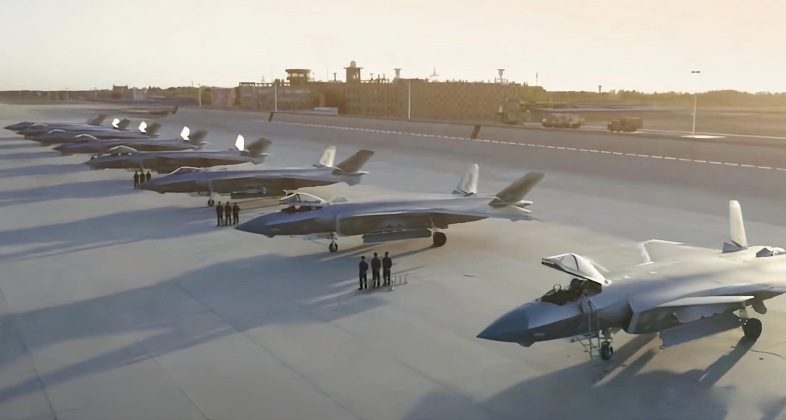News
New Details and Footage of China’s J-20 Stealth Fighters Guarding Airspace: Intercepting F-35s Over the East China Sea
China’s state broadcaster CCTV has aired new footage of J-20 fifth generation fighters in operation, where the were described as performing an “excellent job on regular patrols and controlling the East China Sea Air Defence Identification Zone” (ADIZ). The aircraft have been deployed to the area in growing numbers in recent years. The program interviewed J-20 pilots operating under the Eastern Theatre Command’s Wang Hai Air Squadron about prior intersections of foreign aircraft, with its commander Yang Juncheng stating that: “No matter what happens in the air, even if it means sacrifice, we will never step back from our positions.” Yang and Wei Xin, another pilot from the unit, were shown being scrambled to intercept two unspecified incoming foreign aircraft, and Wei in his J-20 telling the targets in English: “This is China Air Force. You have entered the Chinese ADIZ. Report your nationality ID and the purpose of flight.” This prompted some speculation on Chinese social media that the footage may have been that of an interception of American F-35s – the only other class of fifth generation fighter in the world both in production and fielded at squadron level strength.

The J-20 and F-35 are effectively in a league of their own among production fighters in terms of sophistication particularly in terms of their combination of advanced avionics and stealth capabilities. Distributed aperture systems, which allow pilots to see through their aircraft using their helmets and integrated sensors across the body, are one of the more prominent features which set the two aircraft apart from their competitors. The F-35 is produced in significantly larger numbers, with over 100 being built per year compared to an estimated 32-38 J-20s per year. This still makes the J-20 the second most produced fighter in the world, which is significant since it is used only by a single service, the PLA Air Force, while the F-35 is deployed by the U.S. Military’s three leading branches and by over half a dozen export clients. The F-35 is a much lighter single engine aircraft better optimised to strike operations rather than air to air combat, while the J-20 has the advantage of being a heavyweight twin engine fighter that can supercruise, carry more weapons, integrate a larger radar, and fly considerably higher, faster and with greater manoeuvrability. The two rival fighters had their first encounter confirmed in March 2022 by the head of the U.S. Pacific Air Forces Kenneth Wilsbach, who expressed notable admiration for the capabilities of Chinese stealth fighter units.

The use of the J-20 for interceptions was first confirmed by the Chinese People’s Liberation Army (PLA) Air Force in August 2022. The Eastern Theatre Command first received the fighters under the 9th Air Brigade from January 2019, replacing older Su-30MKK fighters supplied by Russia around the turn of the century. The aircraft face the East China Sea and the hub of U.S. forces in the region in Japan, where F-35s have been deployed in fast growing numbers. It is also well positioned to respond to security threats both on the Korean Peninsula, which falls under the northern command, and the Taiwan Strait which falls under the southern one. All three commands have deployed J-20s in growing numbers and been priority areas for receiving the fighters. The aircraft’s high endurance also allows units deployed under the Central Theatre Command to support those in Korea, the Taiwan Strait and the East and South China Seas.
After the new J-20A with an enhanced stealth profile and improved supercruise-capable WS-10C engines entered production in 2019, new iterations of the design have continued to appear including a twin seat drone controller variant in late 2021 and a stealthier variant a year later with a much flatter low profile cockpit canopy. The J-20 was first seen integrating the next generation WS-15 engine in 2022, which is expected to provide it with greater thrust than any other fighter class in the world and is speculated to be ready for service by the end of 2024, providing not only greater stealth and a much improved flight performance but also a greater endurance and range. Production of the WS-15 could pave the way to further expansion of J-20 production, with facilities in Chengdu reported to already be under expansion which could bring production rates to over quadruple those of any foreign twin engine fighter class.












